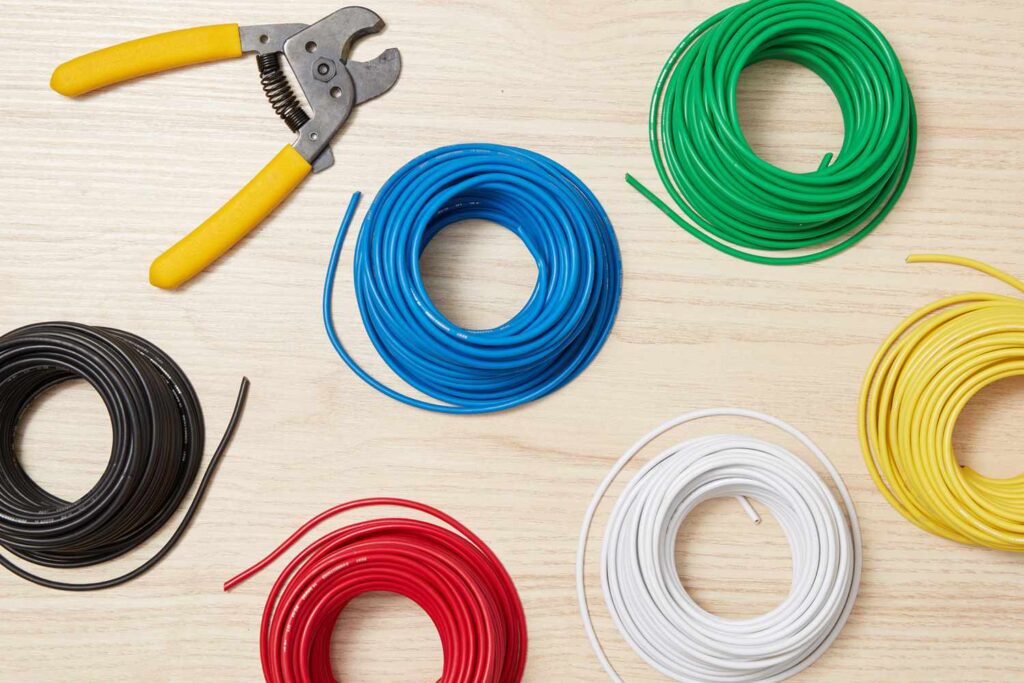
Introduction to Wring
The history of wiring can be traced back to the discovery of electricity in the late 19th century. Early forms of wiring were used for telegraphy and simple electrical signaling systems. As electrical technology advanced, the wiring was used for lighting, power distribution, and eventually for complex communication networks. In the 20th century, the widespread use of electrical devices in homes and businesses led to the development of standardized wiring practices and codes to ensure safety and reliability. The introduction of new materials and technology continues to shape the evolution of wiring today.
The development of the electrical power grid in the early 20th century revolutionized the way electrical energy was transmitted and distributed. This made it possible for homes and businesses to be supplied with electricity from a central source, rather than relying on individual power generators. As the demand for electrical power increased, so did the complexity of the wiring systems required to support it. This led to the development of new materials and technologies for wiring, such as aluminum and plastic, which were lighter and more durable than traditional copper wiring.
In addition, the rise of the computer and telecommunications industries in the late 20th century led to the development of new types of wiring systems, such as fiber optic and Ethernet cables, which enabled faster and more reliable data transfer.
Wiring practices and codes have also evolved over time to ensure safety and reliability. National and international organizations have developed codes and standards to govern the design, installation, and maintenance of electrical wiring systems. These codes and standards are updated regularly to reflect changes in technology and to address safety concerns.
Today, advances in technology continue to shape the way the wiring is used and the materials and techniques used to create it. From smart homes that rely on interconnected devices to the increasing use of renewable energy sources, the future of wiring is sure to be impacted by new developments in technology and changing societal needs.
The evolution of wiring has been driven by the need to increase efficiency, safety, and reliability in electrical systems. One of the key developments in this field has been the use of computer-aided design (CAD) and simulation tools, which have enabled designers and engineers to model and optimize electrical systems before they are built. This has improved the accuracy and efficiency of wiring installations and reduced the risk of errors and malfunctions.
Another important development in wiring has been the increased use of automation and control systems. Modern wiring systems often incorporate sophisticated control systems that allow for remote monitoring and control of electrical systems. For example, building management systems (BMS) use sensors, communication networks, and computer-based control systems to manage heating, ventilation, and air conditioning (HVAC) systems, lighting, and other building services.
The trend towards energy efficiency and the use of renewable energy sources has also impacted the field of wiring. As more homes and businesses seek to reduce their energy consumption and use more sustainable energy sources, new wiring systems and components have been developed to support these goals. For example, microgrids, which are small-scale electrical grids that can be disconnected from the main grid and run on renewable energy sources, have become more common in recent years.
Finally, the growth of the Internet of Things (IoT) has created new demands for wiring systems that can support a large number of connected devices and the vast amounts of data they generate. This has led to the development of new wiring systems, such as wireless networks and low-power networks, which can support IoT applications and ensure that data can be transmitted and received quickly and reliably.
Types of Electrical Wiring Systems
Electrical Wiring is a very important part of a building, be it a residential building, which can be individual houses or apartments, or large commercial spaces like office buildings or industries (factories), while there are several methods & systems of Electrical Wiring, which are used for lighting & other power circuits.
The type of Electrical Wiring does play a major role in the overall cost of the installation. So, it is very important to understand what type of Electrical Wiring Systems are suitable for the particular job.
Usually, the type of wire determines the Electrical Wiring Systems (or at least their classification), so some of the commonly used Electrical Wiring Systems at the Residential, Commercial, Industrial, Auditoriums, etc. are:
- Cleat Wiring
- Casing and Capping Wiring
- Batten Wiring (CTS or TRS)
- Conduit Wiring (Surface or Concealed)
- Lead Sheathed Wiring
Factors To Think About Before Choosing The Wire:
- Purpose: Different wires serve different purposes, such as carrying power or data. Identify the purpose for which you need the wire.
- Voltage Rating: Wires have a maximum voltage rating, which is the highest voltage that can safely be applied to the wire without damaging it.
- Current Rating: Wires also have a maximum current rating, which is the maximum amount of current that can safely flow through the wire without causing damage.
- Gauge: The gauge of a wire is a measure of its thickness and affects its current carrying capacity and resistance.
- Material: Wires can be made of different materials, such as copper or aluminum, each with its own electrical and physical properties.
- Shielding: Some wires, such as those used for data transmission, may require shielding to reduce interference.
- Safety Certifications: Look for wires that have been certified by organizations such as UL, which tests and certifies products for safety.
- Length: Consider the length of the wire you need, as longer wires have more resistance and may require a larger gauge.
- Flexibility: For certain applications, such as in wiring for portable devices, a flexible wire may be required.
- Environment: Consider the environment in which the wire will be used. Will it be exposed to heat, moisture, or other elements that may affect its performance?
- Cost: Wires can vary greatly in price, depending on the material, gauge, and length. You should consider your budget when you are going to choose a wire.
- Brand: Choose a reputable brand with a history of producing high-quality wires.
- Availability: Consider the availability of the wire in your area, as well as any additional supplies, such as connectors, that may be required.
- Future Requirements: Consider whether the wire you choose will meet your future needs, as well as your current requirements.
Conclusion:
Choosing the right wire for your home is an important decision that can have a significant impact on the performance and safety of your electrical system. By considering the purpose, voltage and current ratings, gauge, material, shielding, and safety certifications of the wire, as well as other factors such as length, flexibility, environment, cost, brand, availability, and future requirements, you can make an informed choice that will meet your needs and keep your home and family safe.
